- Home »
- Learningcenter »
- Different types of roofs
Find Your Perfect Roof: The 11 Different Types of Roofs
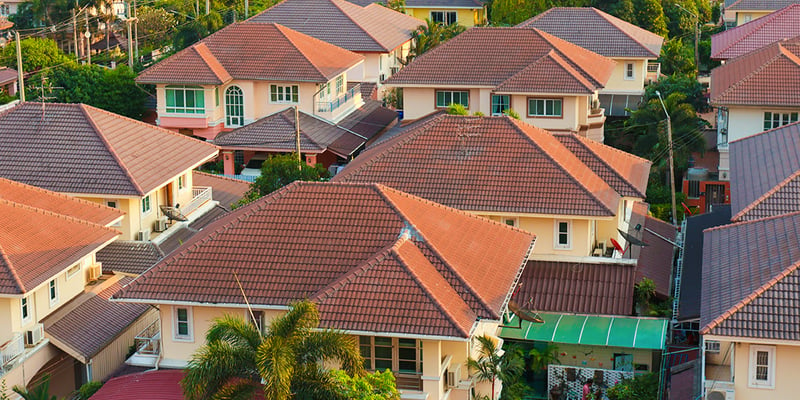
Choosing a good roof for your home needs the right balance of looks, weather compatibility, and practicality. A ton of choices are out there, but the right guidance can make things way easier.
I'm going to cover 11 different roof types, each with a unique character to fit different needs. It's an all-in-one guide to improve your understanding of roofing and, hopefully, leave you better off and more informed than before you read this!
Let's talk about each one and help you find the perfect roof for your home.
#1: Gable Roofs
Gable roofs have this cool, triangular shape; I love their simplicity and long-lasting appeal. Get this, though - their simple construction doesn't kill your budget. It's like they balance looks and utility, huh? Got more going for 'em?
Oh, climate adaptability, you ask? Gable roofs don't just survive - they flourish. Here's how they beat weather accumulation, the sneaky devil that could strain your roof; they channel water away like champs, slashing the risk of buildup. Areas with a ton of snow or regular rain? These roofs, with their sharp angles, are your favorite. That said, remember that gable roofs aren't flawless.

Their triangle design might not hold up well in strong winds. The hazard of damage during big wind events - or even roof lift-off if they're not well-built - is real. That's why you should check out local weather patterns before choosing a gable roof; it's in understanding these potential weak spots and how they could affect roof life.
So, in my opinion, the lowdown on gable roofs is pretty solid. They're both pretty to look at; they can adapt to a lot of homes and conditions. Have to give it to them for quick water and snow shedding. But high winds? They might hit a snag there. Making a smart choice means weighing the good with the bad; this way, you're sure your chosen roof has many uses beyond nice to look at, tough enough to meet Mother Nature head-on!
#2: Hip Roofs
Jumping headfirst into Hip Roofs, I found out they're known for their sides that slope and meet in a central ridge. One big advantage of this unique design? Better stability, especially in strong winds - no wonder you see hip roofs in places that get a lot of hurricanes!
Before we go any further, I have to say - the design of hip roofs? Really cool. They bring a consistency you rarely see in other architectural styles; it's part of their beauty. Keep in mind, though, that this beauty comes with a higher price tag.
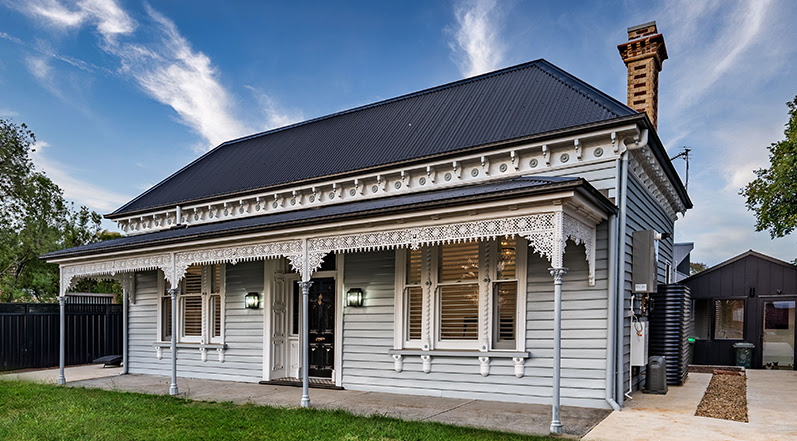
Let's talk about that price. Hip roofs are, without a doubt, pricier than Gable roofs. Why? It's a mixed bag; the complex design needs more parts and extra labor, which means extra costs. Even with the steep price, there are people who swear by the benefits - better durability, solid aesthetics, and good wind resistance; these make it worth the investment, in their opinion.
So, hip roofs are a winner in my book - they're attractive, they have a steady look, and they hold up well in tough weather. Even though there are high construction costs, here's a nugget of wisdom: These roofs are a top choice in places hit by harsh weather. I'd say they're worth considering, as you never know - they might just be the right roof for you!
#3: Pyramid Roofs
Think about pyramid roofs; they're structured a bit like the pyramids in Egypt. They stand out when you compare them to flat or peaked roofs. All their sides gently slide inward until they meet the walls, forming a classic pyramid shape.
Do you want to know why pyramid roofs are popular? It's all in the design. Their sides all angle down and meet at a sharp point, creating a unique peak that you can spot regardless of where you are. It's that kind of style that really sets your building apart from ones with regular roofs.
But pyramid roofs aren't looking pretty; they're also great if you need a roof that can hold up against the wind. Thanks to their triangle-shaped shape, each side works as a wind block, helping to keep wind damage to a minimum. If you live somewhere open to heavy gusts, pyramid roofs are an impressive safety choice.
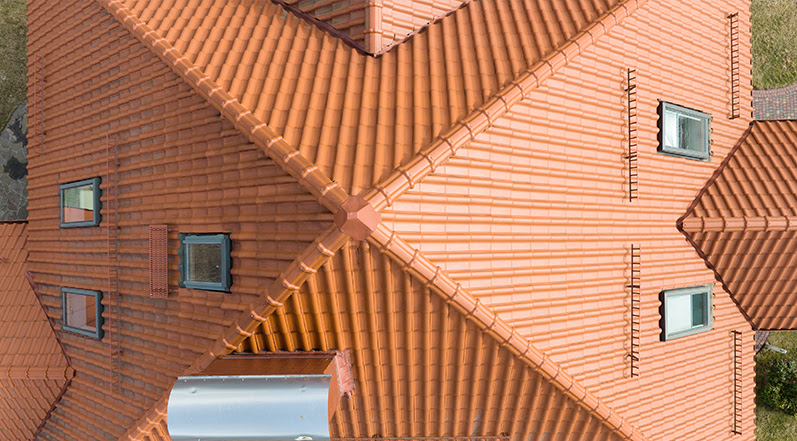
But hold up - I have to point out that pyramid roofs aren't perfect. In fact, they can be quite a hassle. Their delicate design means the construction could be tougher and costlier. To make a roof like this, you'll need a pretty good understanding of geometry, not to mention more people on the job, more parts, and more time. Expensive, right?
Just when you thought it couldn't get any worse, here's another downside: pyramid roofs can make the room underneath feel kind of cramped. If you were hoping for an attic or loft, forget it - because a pyramid design really limits the space up top.
But here's the lowdown: Pyramid roofs are good-looking, sure, and they're awesome when it comes to resisting wind. But you have to weigh up the downsides; will the extra building costs and restricted space inside be worth it? In my opinion, it's a decision that's worth serious thought.
#4: Gambrel Roofs
Gambrel Roofs, often part of barn-style buildings, show off double slopes on each side, with the lower slope showing a sharper tilt than the one up top. This unique shape nails two big jobs: it makes the building process easier and gives you more space in the attic.
Trust me when I tell you, the no-fuss design of two roof beams joined by a gusset - that's all there is to Gambrel Roofs. And because of this simplicity, it can save you on labor and building costs.
A big selling point of these roofs is how sharply the lower slopes pitch. It really lets you make use of the roof space underneath. This extra room can give you a spacious attic, which can be turned into extra living space or used for storage - win, win!
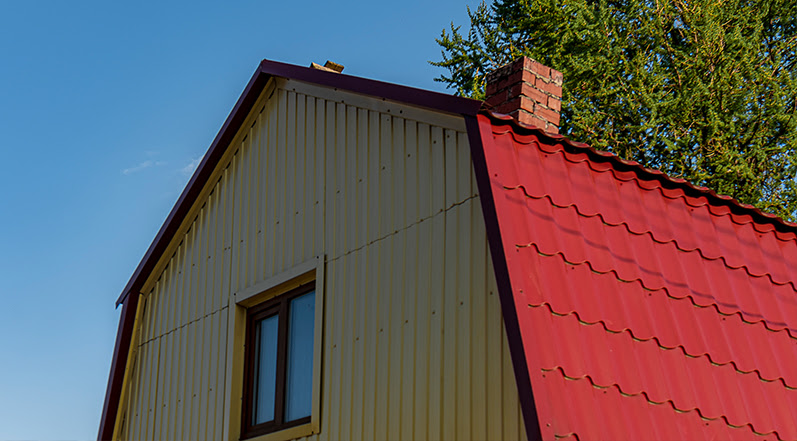
But wait! If you're thinking of going for a Gambrel Roof, think about this - Can it stand up to loads of snow and wild winds? These big, steep walls on these roofs can be risky when burdened by heavy snow that may cause stress and collapse. Also, if you live in a hurricane-prone area, these roofs could be destroyed by wind.
So, Gambrel Roofs can be a practical and attractive choice for barn-style homes - they're simple to build and give you lots of extra room. But, people living in places with big snowfalls or high winds? Hold your horses and weigh these weather-related risks against the benefits. In my opinion, it's good to mull it all over before deciding!
#5: Mansard Roofs
Mansard Roofs - or as you might better know them, French Roofs - are a bit like Gambrel Roofs. On both sides, there are two slopes. But here's what sets Mansard Roofs apart: the fact that they have four sides, all sloping at different angles.
So, why would I advocate for this kind of construction? The single biggest advantage, from my perspective, is that you get a whole new floor tucked right into your roof. Want to turn your attic into a livable space? This is how you'd do it - it's a pretty smart way to put your loft to use. And wouldn't you agree that in a bustling city where space is a premium, there's a definite beauty to optimizing your terrace houses?
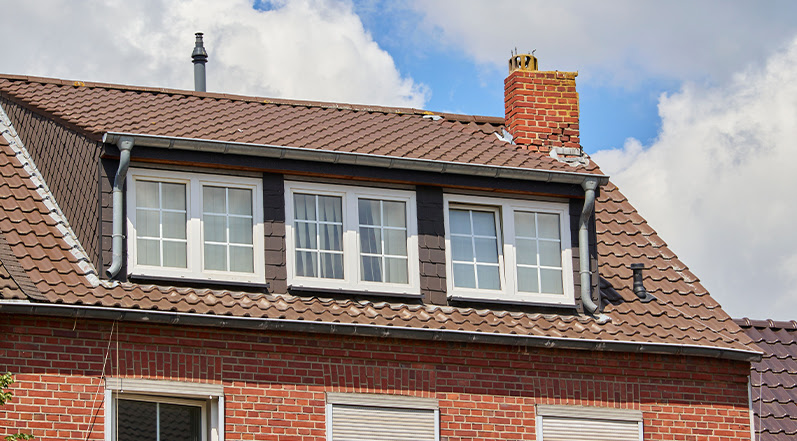
What's the catch - you'd ask - and rightly so! Well, the complications in the structure of a Mansard Roof do invite one important hurdle: the building cost. Why's that, you wonder? It's simple: the double slopes on every side push up the effort, time, and parts needed, which shoots up the overall price tag. So here's your important question: do the beauty of that additional living space and the unique aesthetic outweigh their extra costs? That's for you to choose.
Another thing to look out for - and this is just me looking out for you - is that Mansard Roofs are known to struggle a bit with the weather. The lower-angle slopes can get difficult during heavy snowfall. Makes sense, doesn't it? So, if you choose to go for Mansard Roofs, you'll want to weigh up the weather factors and durability carefully.
In my opinion, the whole beauty of Mansard Roofs lies in their design and function. But hold on - they do come with a steep construction cost. Should you choose one? I'd recommend a thorough evaluation of cost against benefits. Keep in mind factors like your local weather, any budget constraints, and, of course, the desire for an extra living space. In my view, it's in striking that balance!
#6: A-Frame Roofs
An "A" shape defines the A-Frame roof; it's an imaginative, cost-savvy solution for your roofing needs. Due to its design, the roof doubles as walls. It eliminates the need for extra building parts and labor, thus slashing costs.
Why the A-frame roof, though? Their angled pitch brings a ton of advantages to the table. Here's a treat - they cut down wind resistance and are an exceptional pick for places often hit by storms. In areas open to heaps of snow? The roof's steep sides are a lifesaver. Instead of snow mounting up and stressing your building, it warmly bids farewell, sliding off due to the angle of the roof.

The design and financial efficiency of an A-frame roof are worth considering, along with its solid performance against Mother Nature's temper. I believe these factors make it a contender for roofing options. But let's look at the flip side: specifics of your planned project might clash with the A-frame's inherent limitations in floor plan variations. I guess balance is important; make sure you think about the A-frame's unique features against the particular requirements of your project. Sounds like the secret recipe to a great choice, right?
#7: Flat Roofs
I have to tell you, flat roofs are a savvy choice for roofing. They might be called "flat," but here's a fun fact: they actually tilt a little. Why, you ask? It's to help water run off more effectively! By guiding the rain to the roof's edges, pooling becomes a thing of the past. Clever, right?
Flat roofs get a thumbs up in the commercial construction scene. They use fewer parts than their angled kin - eco-friendly and cost-effective! Also, they give you a huge, uniform area perfect for rooftop events or even some sporty fun. Think about it; an air-con unit can be tucked away up there without causing a commotion. That way, no space goes wasted.

But - and it's a sizable but - these roofs have a not-so-great habit. They can hold on to water even though they tilt. Spell it out? Expect a bit of a struggle when heavy rain or snow comes sweeping in. Your roof might start to leak or wear down, so remember maintenance is important here! Neglect it, and you're risking the condition of your roof and your wallet.
Flat roofs? Space-savers and easy on the pocket. The catch? They need a bit of TLC. If you're okay with that, they could boost your building's value in a big way. But I recommend sizing up both the pros and the benefits, And their maintenance needs, before making your choice. A well-informed decision is the best decision, right?
#8: Lose Roofs (Skillion)
Also known as "lean-to" or "shed" roofs, Skillion roofs break away from traditional flat or pitched roofs, bringing in an exciting, sharp angle; I've noticed it's incredibly catchy in the space of modern architecture, easily infusing some modern panache into homes.
The heart of Skillion Roofs' popularity with both architects and homeowners beats around design simplicity - it's in a single, sharply inclined plane, a design without frills. This makes for an efficient and cost-friendly install. But I can't shake the feeling that there might be some pause about its practicality.
Far from being a limitation, though, the steep incline of a Skillion roof is actually a perfect place for solar panels - talk about eco-friendly! Also, the incline really helps with water runoff, which is especially useful for people in heavy-rainfall areas. It even clears a path for gigantic window spaces, letting in oodles of natural light or giving you a powerful view.

But there's no denying that this architectural style might bring along a few hiccups. The high angle might cramp your attic space and knock a chunk off your ceiling height in some places - a bit of a trade-off for the chic look Skillion roofs bring to your home. Not to mention, missing out on your usual roofing bits might mean a lack of proper insulation or ventilation.
Looking at it straight, Skillion roofs come with a sleek modern design, efficient setup, perfect suitability for solar panels, and impressive water runoff. But, they might ask for a bit of compromise on attic space or indoor height. In my opinion, an important question to ask might be - would the blend of modern design and cost-effectiveness of a Skillion roof make up for any potential snags?
#9: Dome Roofs
Dome Roofs have this attractive, round style that doesn't fail to draw a second glance. I appreciate them both for their eye-catching looks and their practical design. Isn't it amazing how resilient they are against harsh weather like high winds and heavy snow? Their design works to evenly spread these forces across the roof - it really does cut down on the chances of damage.
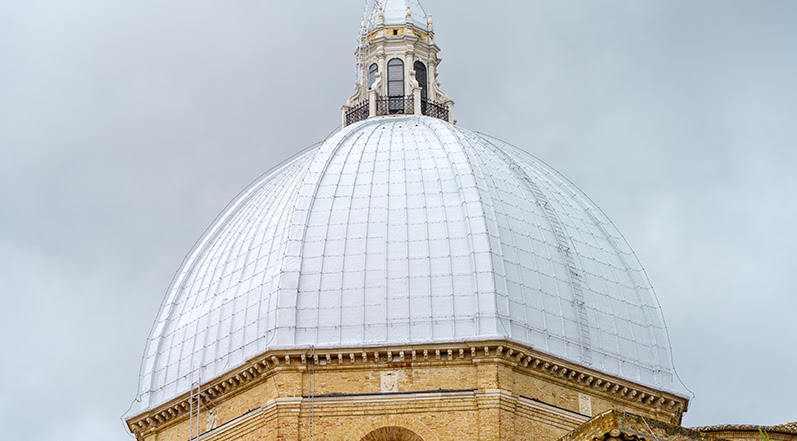
All these old buildings, like Rome's Pantheon, built by the Romans, are proof of how long-lasting and tough Dome Roofs are. Turning these designs into reality, though, is no small feat! These extraordinary designs need careful, skilled work (lots of it!), which makes the building process a bit of a hassle. So, it costs quite a bit more; sometimes, these costs even go beyond what you'd typically expect with other roofing options.
But taking everything into account, Dome Roofs offer amazing weather resistance and a unique look. It's kinda cool! But the sophistication involved in making them and the end up costs might make you second guess. So, how do Dome Roofs stack up on your list of favorite roofing options? Your final decision really comes down to what you prefer. Do you want great looks or need to stick to a budget?
#10: Jerkinhead Roofs
Let's talk about Jerkinhead roofs, a different take on the classic gable roof design. You see, gable ends on this roof type are either clipped or turned down - bye-bye to the traditional triangular format! This roof's job? Stability, plain and simple. Here's why - it beefs up the wind resistance of the roof since there's less wind force hitting the gable ends. So, it makes for a sturdy shield against ferocious storms and gusty winds.
Amazing, right? But to the Jerkinhead roof that meets the eye, beyond its magical looks and wind resistance. Now comes the fun part: cost. Because this roof is a bit of an architect's puzzle, it requires some serious construction chops. We're talking expert-level skills here. So, it goes without saying that a Jerkinhead roof might cost you a bit extra compared to your run-of-the-mill gable roof. But wait, aren't there aspects like likely wind damage, your style (who doesn't love a bit of beauty?), and - oh right - your wallet to think about?
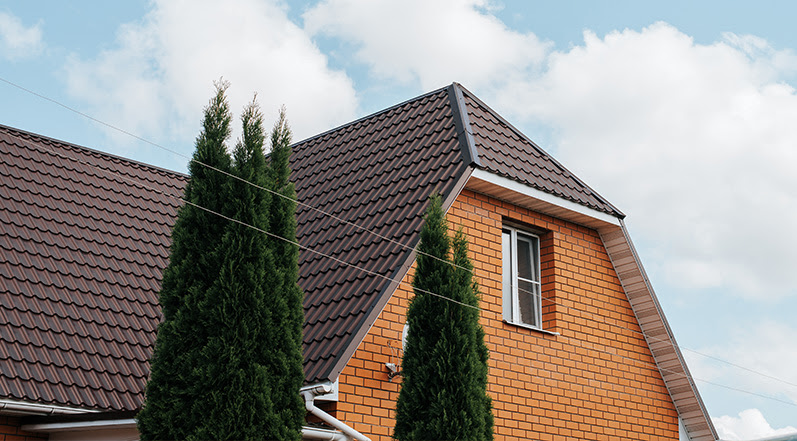
Look at the Jerkinhead roof design! Isn't it a bright star in the roofing scene? It shouts, "Attention to detail can make me look good and really useful!" With a solid double act of design thoughtfulness and solid build, it's almost like it's showing off its stability and wind resistance. It commends the magic mix of functional and fetching roofing, which makes it the gold standard for other roofs.
In my opinion, you should think about a Jerkinhead, especially if shelling out a little extra doesn't give you heartburn. It's a clear case of "you get what you pay for." On a side note, You should leave areas open to stormy weather; this could be legitimate: a roof that stands tall when the winds howl.
#11: Curved Roofs
Sleek, arched aesthetics are the hallmark of curved roofs; they naturally meld into the design of your building. Thanks to their rounded shape, wind resistance is boosted - less surface area is exposed, leading to this point. Isn't it interesting how good looks and practicality can go hand in hand?
This roofing design adapts nicely to different styles. With some careful planning, a curved roof can give your property a very special look in your community. But here's the flipside: they're unique, so they cost a bit more. Special labor is usually needed to make curved roofs, and that can bump up the costs. The real question is whether you'll choose a striking, wind-resistant design or want to keep construction costs low.
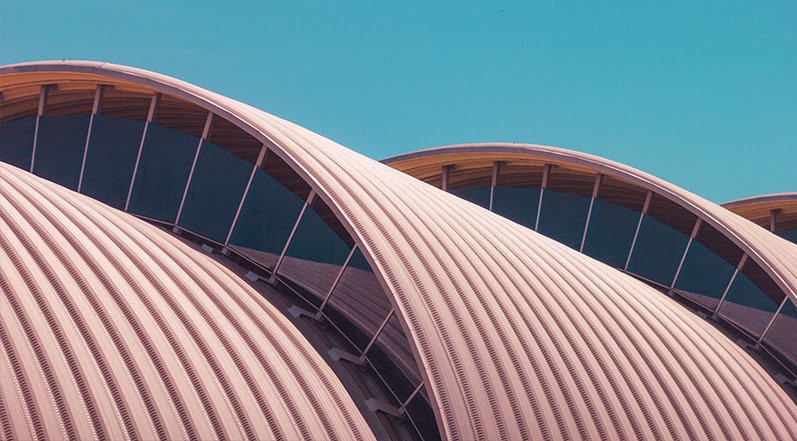
So, let's talk about you: Do you have the perfect roof over your home? I work at Colony Roofers, where we help our clients find just the right roof design. Wondering what we cover? Everything from commercial to residential roofing across Georgia, Florida, and Texas.
We care about protecting your investment and safety. Planning to give a free inspection as a start; we want to nip any possible roof problems in the bud. Don't you think it's important to maintain your roof regularly? Well, I do. But don't just take my word; think about it! We offer impressive repair and installation services at Colony Roofers and share expert advice all through the process. Give us a call today and shower your roof with the specialized attention it needs. Doubts got you stuck? Well, you're not alone; Speaking with a pro is always a smart move. We're looking forward to talking with you.
 Call (678) 365-3138
Call (678) 365-3138



